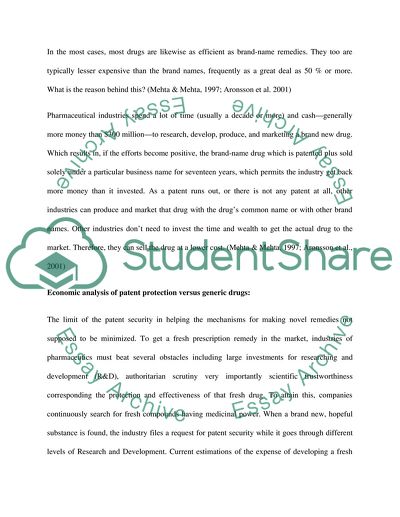Cite this document
(Strategic Options for Brand-Name Prescription Drugs When Patents Expir Research Paper - 1, n.d.)
Strategic Options for Brand-Name Prescription Drugs When Patents Expir Research Paper - 1. Retrieved from https://studentshare.org/health-sciences-medicine/1752837-economic-analysis-of-patented-drugs-vs-generic-drugs
Strategic Options for Brand-Name Prescription Drugs When Patents Expir Research Paper - 1. Retrieved from https://studentshare.org/health-sciences-medicine/1752837-economic-analysis-of-patented-drugs-vs-generic-drugs
(Strategic Options for Brand-Name Prescription Drugs When Patents Expir Research Paper - 1)
Strategic Options for Brand-Name Prescription Drugs When Patents Expir Research Paper - 1. https://studentshare.org/health-sciences-medicine/1752837-economic-analysis-of-patented-drugs-vs-generic-drugs.
Strategic Options for Brand-Name Prescription Drugs When Patents Expir Research Paper - 1. https://studentshare.org/health-sciences-medicine/1752837-economic-analysis-of-patented-drugs-vs-generic-drugs.
“Strategic Options for Brand-Name Prescription Drugs When Patents Expir Research Paper - 1”, n.d. https://studentshare.org/health-sciences-medicine/1752837-economic-analysis-of-patented-drugs-vs-generic-drugs.


